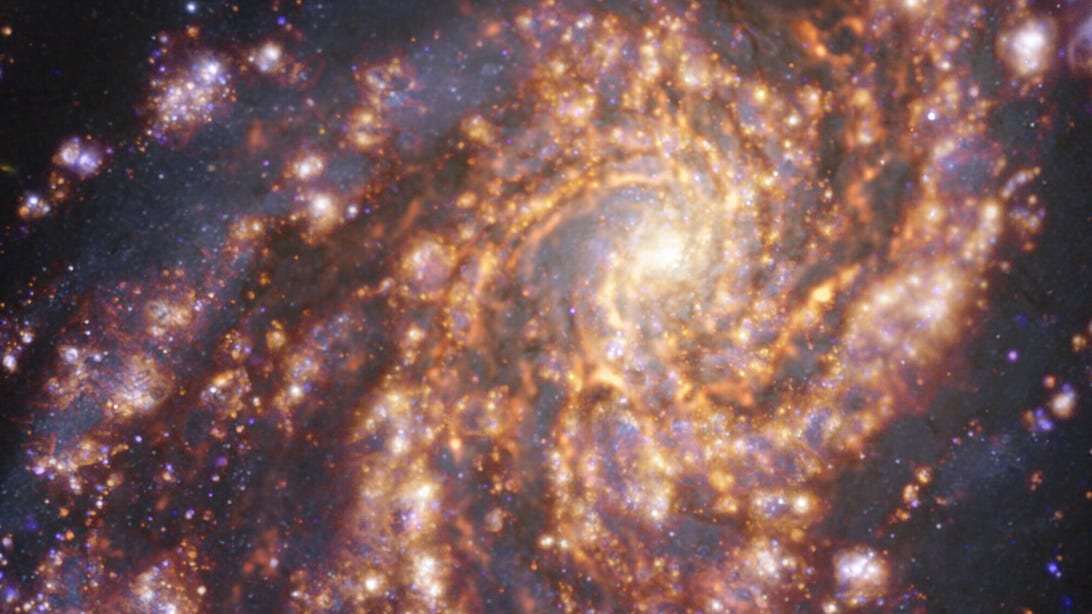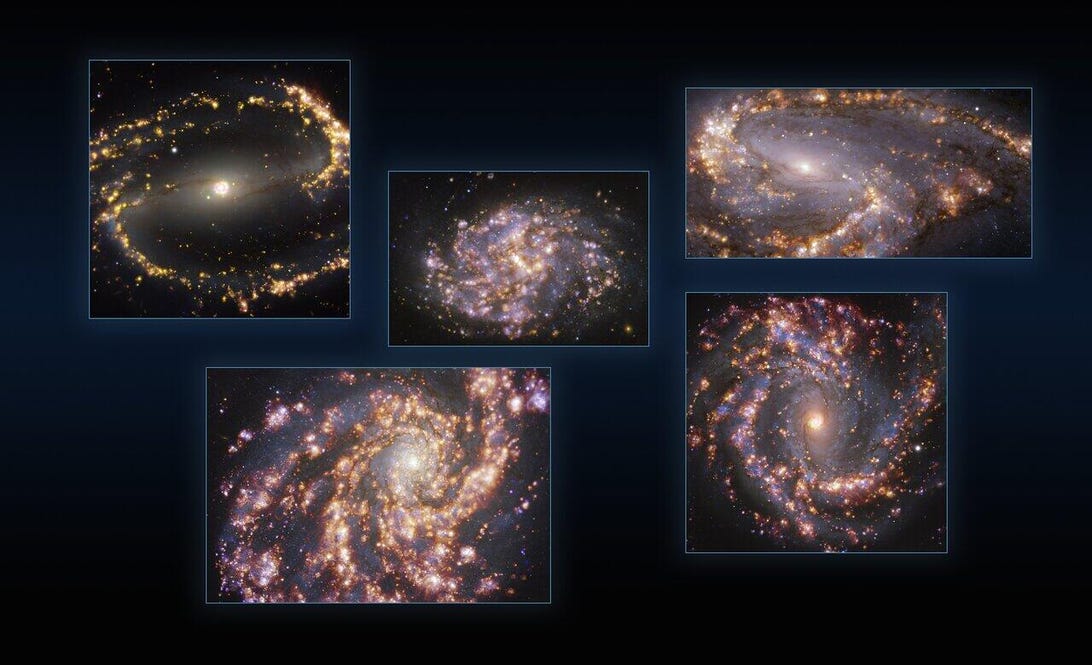Hubble combines with ground-based telescopes to produce incredible snaps of "cosmic fireworks."
Jackson Ryan
July 16, 2021

The European South Observatory's Very Large Telescope and ALMA were used to capture this image of the "grand-design spiral galaxy" NGC 4254ESO/ALMA (ESO/NAOJ/NRAO)/PHANGS
Sometimes at CNET Science we go really deep into explaining the wonders of the cosmos -- the marvelous impossibilities of black holes, the violent collisions of neutron stars, the wobble in the moon's orbit -- and other times we simply stare at photos of distant galaxies and sit in stunned silence.
This is one of the latter times.
On Friday, the European Southern Observatory released new images of nearby galaxies captured by two Earth-based telescopes in Chile, the "Very Large Telescope" and the Atacama Large Millimeter/submillimeter Array, and NASA's Hubble Telescope (which is currently hobbled by an unfortunate glitch). The Observatory dubs the images "cosmic fireworks," but let's stop and think about these fireworks for just a few moments because they are much more than that
Each of the tiny flecks of light is a young star. Thousands upon thousands of them are in each of the images, along with ethereal regions of gas -- gas that gives give rise to more fledgling furnaces, ready to burn for billions of years.
Far from being just pretty pictures, the observations are helping astronomers get a better understanding of how stars form and evolve. Typically, gas and dust accumulate and clump together because of gravity. This cosmic cloud sees atoms smashing together, violently colliding until fusion reactions kickstart the star's engine and it begins its eons-spanning burn. The ESO images provide a look at these different stages of star life.
"We can directly observe the gas that gives birth to stars, we see the young stars themselves and we witness their evolution through various phases," said Eric Emsellem, an astronomer at ESO in Germany, in a press release.

Five different galaxies seen with the MUSE instrument on the Very Large Telescope.ESO/PHANGS
The astronomers focused in on nearby galaxies and used the Very Large Telescope to image the gas and young stars. They then overlaid ALMA images (which are good for capturing gas clouds) to create the stunning "fireworks" display. It could also help researchers unravel a few more star birth mysteries.
While they have a good handle on the birthing process, getting a wide variety of images of these nearby galaxies allow more specific questions to be asked. For instance, what types of places within a galaxy might we expect a star to form -- and why?
The catalogue of imaged galaxies is getting larger and larger, and we are just beginning to understand how diverse these stellar nurseries are. This will be enhanced by new instruments, including NASA's much-delayed James Webb Space Telescope, which will be able to image the universe in unprecedented detail. On the ground, the ESO is planning for the Extremely Large Telescope to come online later in the decade.
So while astronomers will be busy producing the images, we just get to gaze at the fruits of their labor -- the hardest part is picking which galaxy you like best.
First published on July 16, 2021
No comments:
Post a Comment